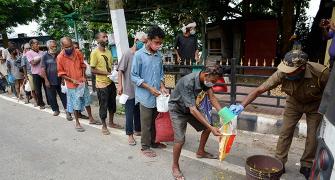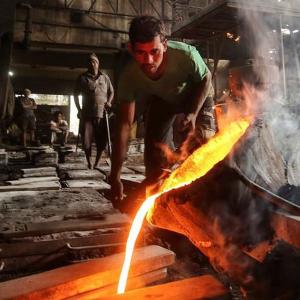For non-banks, the IL&FS crisis was nothing short of India’s Lehman moment, which has for a foreseeable future reset the sector on multiple grounds.

Two and a half years after the infrastructure behemoth Infrastructure Leasing & Financial Services (IL&FS) plunged into crisis, the collateral damage was widespread across the financial sector.
On the whole, the system appears to be far less impacted than anticipated.
If non-banking finance companies (NBFCs) are separately analysed, however, the inference could be very different.
For non-banks, the IL&FS crisis was nothing short of India’s Lehman moment, which has for a foreseeable future reset the sector on multiple grounds.
Securitisation, or monetising loans by selling them to banks and other financial institutions, hit an all-time high within months of the IL&FS crisis unfolding.
At Rs 1.99 trillion in FY19, it was almost double year-on-year after the crisis.
A M Karthik, vice president, ICRA, said the trend is here to stay.
“Because of the pandemic, securitisation in FY21 may end lower at Rs 70,000–Rs 90,000 crore. But this is expected to pick up next year,” he said.
For the system as a whole, securitisation as an avenue of funding rose from 8 per cent in FY18 to 11 per cent in September 2020.
Company-wise reading of numbers indicates that the dependence on securitisation could be higher.
For instance, Mahindra and Mahindra Financial Services, Shriram Transport Finance, Indiabulls Housing and PNB Housing, among well-noted names, have seen securitisation rise by over 50 per cent since FY18.
For Indiabulls Housing, in particular, securitisation is expected to remain an integral part of its funding and is anticipated to account for a third of total liabilities in FY22.
Interestingly, when the IL&FS crisis broke out, the now fraud-hit defunct housing financier (then the fourth largest mortgager), Dewan Housing Finance Corporation, resorted to Rs 30,000 crore of asset securitisation as an immediate solution to stay afloat.
With worthy assets drying up, lenders had to invoke debt resolution mechanisms to recover their dues.
The other important lesson from the crisis and the one that also cracked open the flaw in the system, is that the concept of borrowing short and lending long isn’t sustainable.
Appetite for easy and cheap bond market money quickly waned as mutual funds turned cautious immediately as trouble broke out in IL&FS.
The share of non-convertible debentures (NCDs) and commercial papers (CPs), which accounted for 54 per cent of the total NBFC funding in FY18 dropped to 47 per cent by FY19 to settle at 34 per cent in September 2020.
“Today, liabilities are not as much a problem as it was last June or after the IL&FS crisis,” said R Sivakumar, head – fixed income, Axis Mutual Fund.
Yet, with the pandemic opening the Pandora’s Box on the portfolio stress across asset categories for non-banks, the bond market continues to discriminate between candidates.
In short, money isn’t freely available for all.
“Despite the ratings of individual NBFCs, it is their borrowers’ profile that holds relevance now when we look at companies from an investment perspective,” he explained.
Either way, he is categorical that the past reliance on short-term bonds “is unlikely to come back”, partly also because companies have diversified their liabilities since the crisis.
The third important reset is that of loan growth.
With the cost of money rising and NBFCs having learnt their lesson in a hard way on asset-liabilities management (ALM), growth by default decelerated over the last eight quarters and may remain on a slow mode in the foreseeable future.
“The sector is expected to grow at 7–9 per cent in FY22 against the compounded annual growth rate of 16–18 per cent prior to Covid,” Karthik said, adding that it’s difficult to give any outlook for FY23, at this juncture.
Coming from a rating agency, this uncertainty is quite an indicator of how NBFCs and market participants are still in a wait-and-watch mode.
Added to this, is the neck-to-neck competition from banks.
Over the past year, with faster adoption of external benchmark rates, loans offered by banks have become more appealing compared to those offered by NBFCs.
“The trend of consistent market share losses for NBFCs to banks is continuing.
"Due to lower interest rates and longer loan tenures, customers are favouring banks over NBFCs,” said analysts at Emkay Global Financial Services.
Nishant Shah of Macquarie Capital noted that while NBFCs gained market share from 11 per cent in FY11 to 19 per cent in FY19, the share is expected to decline to 17 per cent in FY22.
Also, while cost of funds is at a multi-year low (5-5.5 per cent for well-rated NBFCs), with some of the regulatory reliefs such as partial credit guarantee and targeted long-term repo operations set to rundown in FY22, that could add to the margin pressure for the sector.
In Karthik’s assessment, housing and big-ticket mortgage loans, heavy commercial vehicle, tractor and car loans where competition is high from banks, may move away from NBFCs’ fold.
Therefore, non-banks may once again gravitate towards riskier new-to-credit customers.
Those with expertise in unsecured loans, personal and small business loans and microfinance loans may witness deeper penetration in coming years, given banks’ reluctance towards these borrowers.
For NBFCs, IL&FS is the second major crisis in less than a decade (the first being 2012’s taper tantrum which set the cost of funds spiralling), and they remain watchful of the changing dynamics.
As a long-time CEO of a diversified non-bank puts it, “if any, life has only come a full cycle for the sector”.
Prior to the liquidity flush between 2013 and 2018, NBFCs largely focused on the unbanked and underserved population where credit bureau scores had little or negligible relevance.
“It was only with the gush of cheap money that 20–25 per cent growth seemed a worthy aspiration.
"Otherwise, like now, banks were the primary source of funding,” he explained.
To that extent Sivakumar also agrees that the 20-plus growth rate was too high in hindsight and it is only logical that it has come down.
Also, with NBFCs rebalancing their ALM positions, the sector itself may not prefer to grow at the pre-IL&FS pace anymore.
In a way then, the IL&FS crisis was an eye-opener even for the regulator to plug the gaps in the system and rectify the long-pending ALM mismatch.
The Reserve Bank of India has actively tweaked norms for NBFCs to strengthen their liabilities since mid-2019 and more is anticipated.
The evolution of co-lending and co-origination of loans since 2019 is also expected to play a huge role in shaping up the balance sheets of NBFCs. Sivakumar said the lines are already blurring for large NBFCs and with the regulator nudging them to adopt a bank-like structure, whether the existing ones would want to remain “systemically large NBFCs” in the coming years would be tested.
Photograph: Francis Mascarenhas/Reuters










